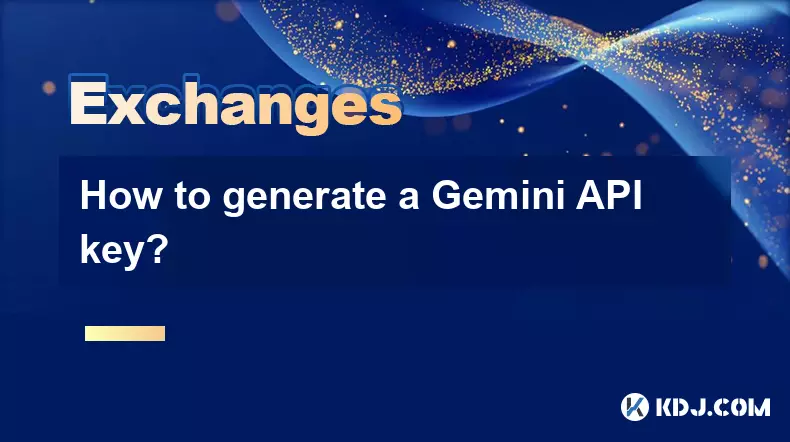-
 Bitcoin
Bitcoin $111200
0.03% -
 Ethereum
Ethereum $4321
0.45% -
 Tether USDt
Tether USDt $0.9999
-0.02% -
 XRP
XRP $2.824
0.89% -
 BNB
BNB $856.7
1.36% -
 Solana
Solana $204.4
0.79% -
 USDC
USDC $0.9998
0.00% -
 Dogecoin
Dogecoin $0.2178
2.21% -
 TRON
TRON $0.3317
-1.04% -
 Cardano
Cardano $0.8334
2.36% -
 Hyperliquid
Hyperliquid $47.48
5.04% -
 Chainlink
Chainlink $22.43
0.45% -
 Ethena USDe
Ethena USDe $1.001
0.01% -
 Bitcoin Cash
Bitcoin Cash $615.9
4.10% -
 Sui
Sui $3.404
2.84% -
 Stellar
Stellar $0.3610
1.92% -
 Avalanche
Avalanche $24.44
1.03% -
 Hedera
Hedera $0.2185
1.99% -
 Cronos
Cronos $0.2710
2.40% -
 UNUS SED LEO
UNUS SED LEO $9.567
0.12% -
 Litecoin
Litecoin $112.4
1.13% -
 Toncoin
Toncoin $3.084
-0.52% -
 Shiba Inu
Shiba Inu $0.00001239
2.12% -
 Polkadot
Polkadot $3.881
2.85% -
 Uniswap
Uniswap $9.394
0.47% -
 Dai
Dai $0.9997
-0.02% -
 Ethena
Ethena $0.7621
16.86% -
 Monero
Monero $269.5
0.69% -
 Aave
Aave $302.2
-1.65% -
 World Liberty Financial
World Liberty Financial $0.1825
-0.64%
How to generate a Gemini API key?
Generate and secure your Gemini API key via the developer portal, enable 2FA, assign limited permissions, store credentials safely, and use sandbox testing before live deployment.
Sep 06, 2025 at 01:36 pm

Understanding the Gemini API Access Process
1. Navigate to the official Gemini developer portal to initiate the API key generation process. Ensure you are logged into your verified Gemini account, as API access is restricted to authenticated users with completed identity verification.
2. Locate the 'API' section within your account dashboard. This section provides tools for creating new API keys, managing existing ones, and configuring permissions based on trading, account access, or withdrawal functions.
3. Click on 'Create New API Key' to begin the setup. You will be prompted to assign a label to the key for identification, which helps in managing multiple integrations or applications.
4. Select the desired permissions for the API key. Gemini allows granular control such as enabling read-only access, trading capabilities, or withdrawal permissions. Exercise caution when granting withdrawal rights, as compromised keys with such access can lead to fund loss.
5. Complete the two-factor authentication (2FA) step to confirm the creation. Upon successful verification, the system will display your API key and secret. These credentials will only be shown once, so store them securely in an encrypted environment or password manager.
Securing Your Generated API Credentials
1. Immediately after generation, copy both the API key and the secret key into a secure storage solution. Avoid saving them in plaintext files, browser autofill, or version-controlled repositories.
2. Implement IP whitelisting if your use case allows it. Gemini permits users to restrict API access to specific IP addresses, reducing the risk of unauthorized access even if credentials are exposed.
3. Regularly rotate API keys, especially if they are used in high-risk environments or shared across teams. Deactivate old keys through the API management panel once a new one is in place.
4. Monitor API usage logs available in the dashboard. Unusual activity patterns, such as unexpected spikes in request volume or access from unfamiliar locations, may indicate a security breach.
5. Never expose your API secret in client-side code, public forums, or support tickets. Treat it with the same sensitivity as your account password.
Integrating the API Key into Trading Bots and Applications
1. When configuring a trading bot or automated script, input the API key and secret into the designated authentication fields. Most bots use environment variables to prevent hardcoding credentials.
2. Use the REST or WebSocket endpoints provided by Gemini’s API documentation to send authenticated requests. Each request must include proper headers with the API key and a cryptographic signature generated using the secret.
3. Test the integration in the Gemini sandbox environment before deploying to live markets. The sandbox allows developers to simulate trades and API calls without risking real funds.
4. Handle rate limits imposed by the API. Gemini enforces request quotas to maintain system stability. Design your application to manage throttling by implementing retry logic with exponential backoff.
5. Keep your integration updated with the latest API version. Gemini occasionally deprecates endpoints or modifies response formats, and staying current ensures uninterrupted functionality.
Frequently Asked Questions
Can I generate multiple API keys for different purposes?Yes, Gemini allows users to create multiple API keys. This is recommended for separating functions such as one key for trading bots, another for portfolio tracking, and a third for withdrawal automation, enhancing security through compartmentalization.
What should I do if my API key is compromised?Immediately log into your Gemini account and deactivate the compromised key from the API management section. Generate a new key with the necessary permissions and update your applications. Review transaction logs for any unauthorized activity.
Is there a fee for using the Gemini API?No, Gemini does not charge additional fees for API usage. However, standard trading fees apply to transactions executed through API calls, consistent with those on the web platform.
Does Gemini support API key permissions for staking or earning products?Currently, API access is primarily focused on trading and account data. Staking or interest account operations are generally not supported via API and must be managed through the website or mobile app.
Disclaimer:info@kdj.com
The information provided is not trading advice. kdj.com does not assume any responsibility for any investments made based on the information provided in this article. Cryptocurrencies are highly volatile and it is highly recommended that you invest with caution after thorough research!
If you believe that the content used on this website infringes your copyright, please contact us immediately (info@kdj.com) and we will delete it promptly.
- Dogecoin's Technical Setup: Is a Super Rally to $2 Brewing?
- 2025-09-06 14:25:13
- BNB Price Prediction: Will Binance Coin Reach $1000? A 2025 Analysis
- 2025-09-06 15:05:13
- Treasury, Bitcoin, and Public Listings: A New York Minute on Crypto's Wall Street Ambitions
- 2025-09-06 15:05:13
- Bitcoin's Wild Ride: Navigating Market Dynamics and Regulatory Challenges in the Crypto Jungle
- 2025-09-06 15:25:17
- MARA's Bitcoin Bonanza: Treasury Rankings and Beyond!
- 2025-09-06 15:25:17
- Tether's Golden Gamble: Altus Investment and the Future of Stablecoins
- 2025-09-06 15:30:12
Related knowledge

How to check my portfolio balance on KuCoin?
Sep 06,2025 at 10:36am
Accessing Your KuCoin Account Dashboard1. Navigate to the official KuCoin website or open the KuCoin mobile application. Ensure you are using a secure...

How to buy USDT on KuCoin?
Sep 06,2025 at 08:55am
Creating and Verifying Your KuCoin Account1. Navigate to the official KuCoin website and click on the 'Sign Up' button to begin registration. Provide ...

Why is my KuCoin account frozen?
Sep 05,2025 at 06:55pm
Common Reasons for a Frozen KuCoin Account1. Unverified identity information. KuCoin requires users to complete KYC (Know Your Customer) procedures to...

Can I use KuCoin without KYC?
Sep 06,2025 at 02:37pm
Understanding KuCoin's Verification Policies1. KuCoin operates with a tiered access model that allows users to engage with the platform even without c...

How to set a stop loss on KuCoin?
Sep 06,2025 at 10:01am
Understanding Stop Loss on KuCoin1. A stop loss is a risk management tool used by traders to limit potential losses on a position. On KuCoin, this fea...

What is the difference between spot and futures on KuCoin?
Sep 06,2025 at 04:01am
Understanding Spot Trading on KuCoin1. Spot trading involves the direct purchase or sale of cryptocurrencies at the current market price. When a user ...

How to check my portfolio balance on KuCoin?
Sep 06,2025 at 10:36am
Accessing Your KuCoin Account Dashboard1. Navigate to the official KuCoin website or open the KuCoin mobile application. Ensure you are using a secure...

How to buy USDT on KuCoin?
Sep 06,2025 at 08:55am
Creating and Verifying Your KuCoin Account1. Navigate to the official KuCoin website and click on the 'Sign Up' button to begin registration. Provide ...

Why is my KuCoin account frozen?
Sep 05,2025 at 06:55pm
Common Reasons for a Frozen KuCoin Account1. Unverified identity information. KuCoin requires users to complete KYC (Know Your Customer) procedures to...

Can I use KuCoin without KYC?
Sep 06,2025 at 02:37pm
Understanding KuCoin's Verification Policies1. KuCoin operates with a tiered access model that allows users to engage with the platform even without c...

How to set a stop loss on KuCoin?
Sep 06,2025 at 10:01am
Understanding Stop Loss on KuCoin1. A stop loss is a risk management tool used by traders to limit potential losses on a position. On KuCoin, this fea...

What is the difference between spot and futures on KuCoin?
Sep 06,2025 at 04:01am
Understanding Spot Trading on KuCoin1. Spot trading involves the direct purchase or sale of cryptocurrencies at the current market price. When a user ...
See all articles

























































































